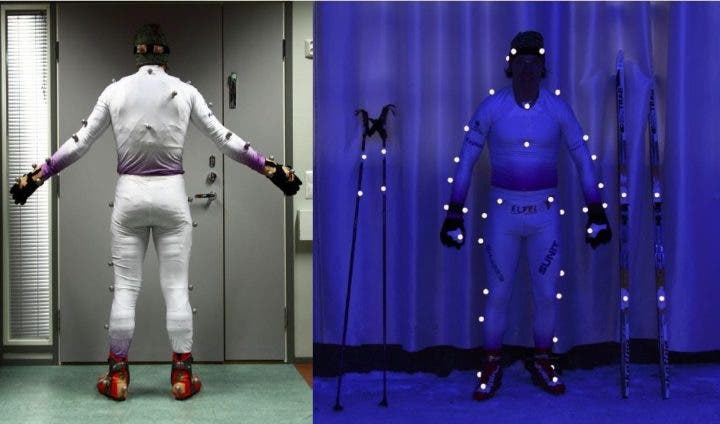During the last decades cross-country skiing has undergone a significant development in terms of equipment for its practice: the soles of the skis, the preparation of the slopes, the ski techniques, as well as the types of competitions have resulted in a growing interest in applied biomechanics.
History of biomechanics in cross-country skiing
Traditionally, cross-country skiing biomechanics research has been divided into relatively independent studies of kinematics, taking into account the characteristics of movement, kinetics and their causes.
In cross-country skiing, the kinematics involves variables such as the speed of the movement cycle, the speed of travel, the length or angles of the joints and the ranges of movement. Biomechanics has also investigated variables such as the forces applied through skis and poles, muscle activity, or energy cost.
However, almost 30 years ago it has been given a broader approach, in which muscle activity patterns and cinematic analysis are integrated with force records. Fulfilling this vision has required the development of measurement and recording analysis technology data, but only recently has it become feasible to conduct integrated cross-country skiing studies, in which muscle activity and strength measurements , along with measurements of respiratory and blood samples, have been linked to movement analysis.
How are forces measured in cross-country skiing?

The measurement of forces in cross-country skiing is based on the three laws of Newton’s classical mechanics: the law of inertia, the law of acceleration, and the law of action and reaction. On this basis, three different approaches have been used during the measurement of reaction forces in cross-country skiing:
- External force plates.
- Pressure templates.
- Force sensors mounted on skis and poles.
1. External force plates
Force plates, covered with snow, have been used above all to measure the force exerted on skis and poles in classical technique , where the essential movements can be projected in two dimensions (2D), in anterior-posterior and vertical directions. . However, the creation of the measurement system is relatively slow and the application of force plates for the study of three-dimensional movements in skating technique is limited, mainly due to the spatial requirements of the measurement area.
2. Pressure templates
A more recent approach to force measurement has been pressure insoles, which can be attached to the inside of the skier’s boot. This system consists of several measurement areas, the results of which can be summarized as the total force of the vertical reaction (perpendicular to the template / ski surface). Furthermore, this approach allows the convenient calculation of the location of the center of pressure (CP), which can be thought of as the point of application of force (PAF).
The pressure templates are easy to use and allow the measurement of forces during the ski movement under normal conditions using both techniques (classical and skating). The main limitations of this approach are that it only measures the vertical force that is exerted on the skis.
3. Force sensors mounted on skis and poles
Perhaps the most promising approach to measuring forces in cross-country skiing is the use of these types of sensors. From this approach, the forces exerted on the ski are measured with small force plates placed between the ski and the binding, but also with strain gauges to know the bending strain measurement. On the other hand, the force exerted on the poles is usually measured with sensors placed under the grip or strap.
The main advantage of force plates between the ski and the binding is the measurement of forces on the ski in more than one dimension, both in classical technique and in skating.
References
- Andersson, E. 2011. Biomechanical analysis of the herringbone technique in classical cross-country skiing. Master’s Thesis. Norwegian University of Science and Technology.
- Komi, PV 1985. Ground reaction forces in cross-country skiing. International Series in Biomechanics, Volume 5B, Biomechanics IX-B, 185-190.
- Komi P., 1987. Force measurements during cross-country skiing. Int J Sport Biomech, 3, 370-381.
- Smith, GA 1992. Biomechanical analysis of cross-country skiing techniques. Med Sci Sports Exerc, 24, 1015-1022.
